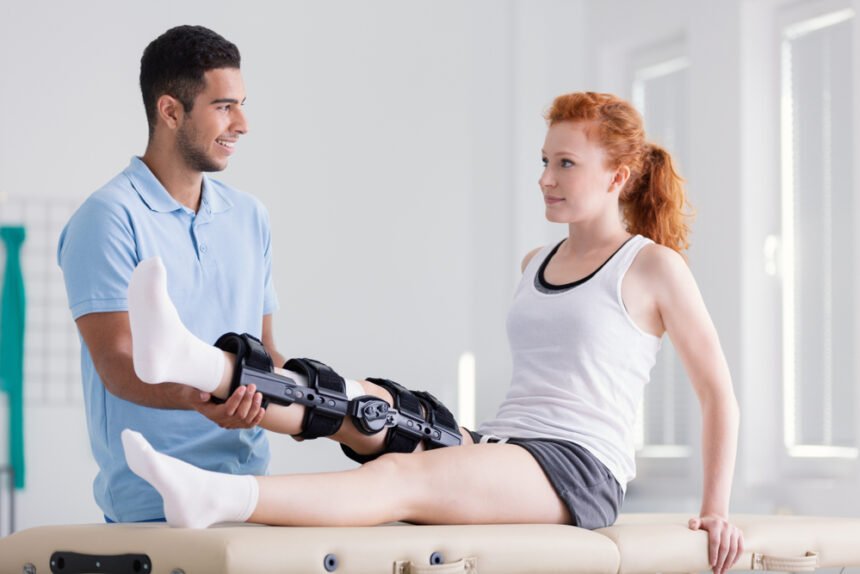A torn ACL is not uncommon, and it can be easily fixed with either physical therapy (if the injury is not serious) or surgery. In fact, torn ACLs are some of the most common sports injuries. But even if the ACL is so damaged that you have to get surgery on your knee, physical therapy and recovery will be necessary.
The good news is that ACL patients who follow through with their therapy recommendations make a full recovery and are able to regain the normal range of extension and bending in their knee. So, even though it may be tedious (depending on the seriousness of your injury), it’s essential to follow your physical therapist’s recommendations.
And therapeutic exercises are almost always on a therapist’s list of recommendations for the rehabilitation period. To make it easier for you, we compiled a list of some of the most common exercises therapists recommend.
Find a Physical Therapist in Your Area
Even though a torn ACL is not a life-threatening injury, it can affect your mobility and your ability to play sports if it’s not treated right. This is why it’s important to work with a therapist you like and whom you can visit whenever you need.
Therefore, the best option is to look for a therapist in your area. Urban areas usually have more options, but it’s always worth comparing. For example if you’re based in Texas, ACL tear specialists in Houston can be found easily, but you also need to be aware of surgery wait times. Delaying treatment can have a negative impact on your recovery, so it’s important to be proactive.
Types of Exercises & Activities that Help Boost ACL Recovery
There are between 100,000 and 200,000 ACL injuries each year. The good news is that this means that there is a lot of research on the treatment benefits.
ACL recovery happens in several stages (usually three or four), and each stage has a series of specific exercises to help you regain mobility and full function of the knee. Also, each stage of healing has a specific pace and intensity that needs to be discussed with your physical therapist, so make sure to discuss everything before starting any exercise regime.
Exercises for Phase One
If you’ve had surgery, phase one starts immediately after and lasts for about two to four weeks. Of course, each person is different, so the length of phase one is directly dependent on your progress.
Side note: if you didn’t have surgery, you would still go through phase one, but depending on the seriousness of your injury and your progress, it may be shorter.
Here is a list of exercises physical therapists recommend for the first phase of recovery:
- Heel slides (seated or lying down on your back) – as a starting exercise, it builds knee flexion range without putting too much pressure on the ligaments;
- Passive knee extensions – another great starter exercise that’s easy on the ligaments but can be difficult if your knee is stiff;
- Straight leg raises – these are a bit more advanced and require better muscle (core muscles, too) control. Also, you can do them only if you can fully straighten the leg.
- Quadricep sets
- Hamstring sets
- Range-of-motion exercises
Exercises for Phase Two
As you ease into phase two, you have to be careful not to overdo it with exercise. You’ll probably feel better, and you will be more confident about your knee, but it’s still too early in the rehab process.
The second phase of recovery usually lasts around three to five weeks and includes exercises such as:
- Working with a stepper for some step-up exercises
- Bridges (with the injured knee on the floor or in the air)
- Balance activities – some yoga poses may be beneficial
- Partial lunges – if the knee can support your body weight
- Biking – this one’s great for recovery but also for a bit of cardio and some fresh air (if outside)
Phases Three & Four
As your knee heals, your therapist will start recommending exercises for dynamic movements, endurance, and coordination (phase 3). These often include step-downs, three-way lunges, and squats.
For phase four, the exercises will focus on testing the functionality of your knee and make sure you’re ready to return to doing what you love most – playing sports and moving around without anything bothering you.
Sleep
While not an exercise per se, sleep is an essential factor in your recovery. Your body needs rest, especially during the first two phases, so do everything in your power to improve the quality of your sleep.
Start by creating the ideal sleep environment and continue by eating a healthy diet. Also, avoid social media and binge Netflix (or any other streaming platform) because they can easily disrupt your sleep patterns. Try to stay positive about your recovery and keep your brain focused on the final goal, which is full rehabilitation of your knee.
Wrap Up
Injuries can be difficult to handle, especially if you’re used to moving around all day. However, if you do get a torn ACL, it helps to know it’s not the end of your sportive activities. Your knee will take some time to heal (depending on the seriousness of the injury), but if done right, your recovery will be successful.

